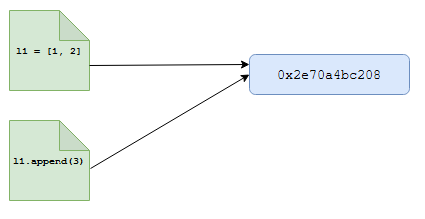Python, lists and memory management →
In an earlier post, we saw how lists, despite being mutable objects in Python are somewhat confusing when it comes to certain operations. Let us play some more and see how they behave when we concatenate lists using append().
l1 = [1, 2]
print (l1)
print ('memory referenced by l1: {0}'.format(mem_addr(l1)))
In my execution the memory referenced by l1 seems to be 0x2e70a4bc208. Now, as in our earlier example, let us append 3 to l1, but this time using the append() function.
l1.append(3)
print (l1)
print ('memory referenced by l1: {0}'.format(mem_addr(l1)))
Now, we see that the new list object (after appending 3) references the same memory 0x2e70a4bc208 as before. So, when it comes to append() Python’s memory manager seems to treat lists as a real mutable object. Python developers, especially new ones, need to be careful and understand these quirks thoroughly.
